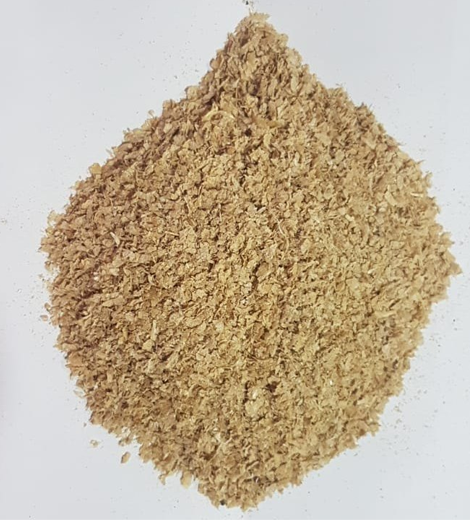
Wheat Bran
Wheat bran is the outer layer of the wheat kernel, and it is a byproduct of wheat milling. It is rich in dietary fiber and contains various essential nutrients.
Wheat bran is also used as an ingredient in animal feed, especially for livestock and poultry. It provides a source of fiber, energy, and some essential nutrients.
Wheat Bran is composed mainly of the outer protective layers of the wheat kernel. It consists of three primary layers: the outer pericarp, the inner pericarp, and the seed coat. These layers contain the bran's key components:
Dietary Fiber: Wheat bran is particularly known for its high fiber content. It contains both soluble and insoluble fiber, with the latter being predominant. Fiber is essential for digestive health and can help regulate bowel movements.
Protein: Wheat bran also contains a moderate amount of protein, although it is not as protein-rich as wheat germ or whole wheat flour.
Vitamins and Minerals: Wheat bran contains various vitamins and minerals, including B vitamins (such as niacin, riboflavin, and thiamine), magnesium, phosphorus, and zinc.
Phytonutrients: It contains phytonutrients, antioxidants, and phytosterols that may have health benefits.
Dietary Fiber Source: Wheat bran is primarily consumed for its high dietary fiber content. It can be added to foods such as cereals, bread, muffins, and pancakes to increase their fiber content.
Digestive Health: The insoluble fiber in wheat bran can promote regular bowel movements and help prevent constipation.
Weight Management: The high fiber content can contribute to a feeling of fullness, potentially aiding in weight management by reducing overall calorie intake.
Heart Health: The soluble fiber in wheat bran can help lower cholesterol levels, potentially reducing the risk of heart disease.
Blood Sugar Control: Dietary fiber can also help regulate blood sugar levels, which is beneficial for individuals with diabetes or those at risk of developing diabetes.
Digestive Health: Wheat bran can aid in maintaining a healthy digestive system by preventing constipation and promoting regular bowel movements.
Potential Allergen: Wheat bran contains gluten, so it is not suitable for individuals with celiac disease or wheat allergies.
Baking and Cooking: When using wheat bran in recipes, it is often recommended to combine it with other flours or ingredients because it can be quite dense and affect the texture of baked goods when used in large quantities.
Varieties: Wheat bran can vary in quality and nutrient content depending on the milling process and the type of wheat used.
Wheat Bran is a nutritious byproduct of wheat milling that is rich in dietary fiber and various essential nutrients. It is commonly used in the food industry to boost the fiber content of products and has potential health benefits related to digestive health, heart health, and blood sugar control when incorporated into a balanced diet.
